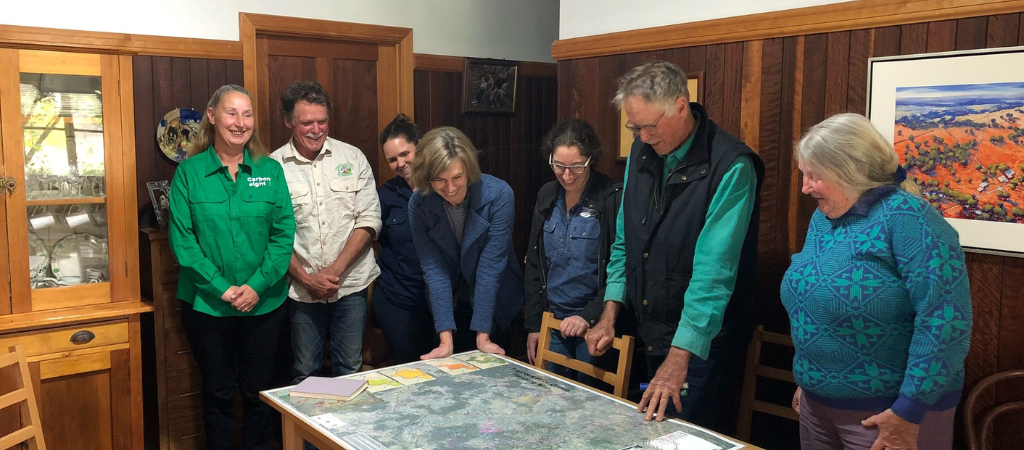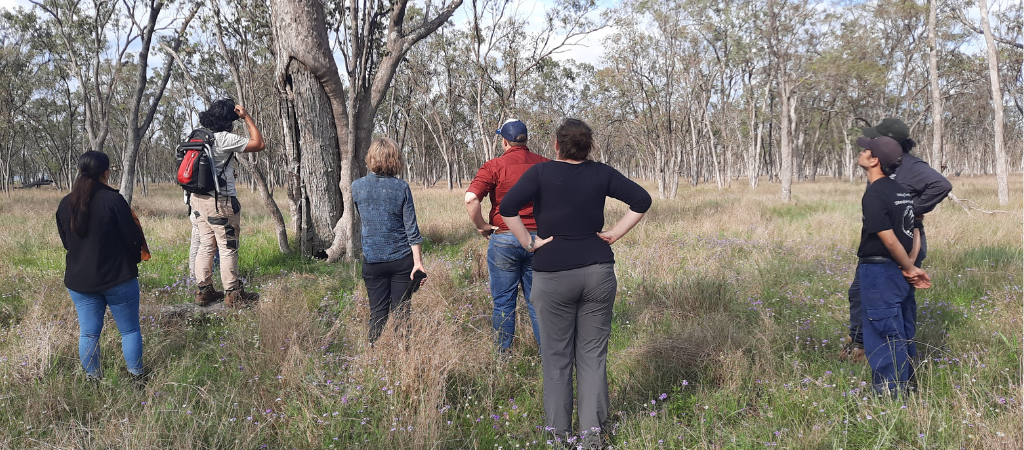One of Australia’s most significantly diverse ecosystems is set to make a comeback after the Threatened Species Commissioner visited the Brigalow Belt west of Toowoomba.
Dr Fiona Fraser was touring Brigalow country to work with existing partners on the implementation of the Threatened Species Action Plan.
The once dominant brigalow forest now only covers five percent of its original land area extending from Townsville to central NSW; eight species traditionally found in the belt are now extinct and a total of 147 species and 100 ecological communities are listed as threatened.
Natural Resource Management group Southern Queensland Landscapes facilitated the tour following the release of the plan in October by Minister for the Environment and Water, Tanya Plibersek.
SQ Landscapes Knowledge & Information Officer Holly Hosie said the Commissioner was interested in understanding what work was currently underway to maintain and enhance the threatened system and the species it supports, and provide advice and support for future project design.

“The Commissioner learnt how eight Traprockers are doing it first, in a farmer-lead management and land use intervention; which could then be replicated on farms across the Traprock area on the Darling Downs in Southern Queensland.”
“First stop on the tour was with formal land managers the Traprock Group who are working in partnership with the Queensland Government, SQ Landscapes, Granite Belt Sustainable Action Network (GBSAN) and Regen Farmers Mutual to investigate opportunities to reinstate natural landscape linkages throughout their region,” Holly Hosie said.
“By individual farmers linking their individual habitats with nearby state forests and national parks they can extend native habitat and breeding opportunities and resilience of threatened and endangered species,” Ms Hosie said.
“This is especially important to the Box Gum Grassy Woodlands Threatened Ecological Community which traditionally supported the Regent honeyeater and other threatened species,” she said.
“The Commissioner learnt how eight Traprockers are doing it first, in a farmer-lead management and land use intervention; which could then be replicated on farms across the Traprock area on the Darling Downs in Southern Queensland.”
“Furthermore, this concept could then be replicated on scale over time and space to improve outcomes for the whole Brigalow Belt.”

“This is an excellent example of production and environmental communities coming together on common problems and promoting biodiversity; and success is really attributed to the stewardship mindset that these communities have.”
SQ Landscapes Project Delivery Lead Natasha Mylonas said the tour also took in 3,600 hectare grazing property, ‘Warrowa,’ near Southwood via Dalby.
“Land managers Warren and Lynette Urquhart discussed impacts on their property with the Commissioner and detailed how they are working with SQ Landscapes to reverse some of this,” Natasha Mylonas.
“The Regional Land Partnerships - Brigalow project has supported broadscale pest control work on Warrowa, the neighbouring Southwood National Park and other surrounding properties,” Ms Mylonas said.
“This area supports Brigalow Threatened Ecological Communities and closely associated remnant systems; with the project primarily targeting feral pigs as they are highly destructive to this environment,” she said.
“This is an excellent example of production and environmental communities coming together on common problems and promoting biodiversity; and success is really attributed to the stewardship mindset that these communities have.”

“There has also been extensive collaboration to include First Nations People and implement management practices such as cool burning within the reserve,” Ms Humes said.
Meanwhile SQ Landscapes Project Delivery Officer Breanna Humes said the Commissioner was also taken to the Abattoir Reserve which is five minutes north of Dalby, and features a good example of Poplar box grassy woodland Threatened Ecological Communities.
“We met with the Bunya Peoples Aboriginal Corporation (BPAC) and Western Downs Regional Council to hear about the successes they are having and challenges in maintaining and protecting the conservation values of the Stock Route Network within the Poplar box grassy woodland TEC,” Breanna Humes said.
“There has also been extensive collaboration to include First Nations People and implement management practices such as cool burning within the reserve,” Ms Humes said.
“BPAC are managing other reserves and are willing to share their extensive knowledge of looking after Brigalow Country which was very important to share with the Commissioner for future project planning,” she said.
SQ Landscapes’ Regional Land Partnerships Brigalow project has been working with communities since 2019 to understand the value of Brigalow scrub and implement on-farm actions that protect remaining patches.
“SQ Landscapes contains a large footprint of the Brigalow priority place identified in the action plan,” Holly Hosie said.
“And we will continue working with communities and building on existing Brigalow projects to identify how we can collectively deliver on that action plan presented by Minister Plibersek,” Ms Hosie said.
“The benefit to this important habitat and the threatened and endangered species it supports is critical; but the flow on effect to the broader health of Country and the communities represented in the region will be invaluable,” she said.
To learn more about the Regional Land Partnerships - Brigalow project visit
https://www.sqlandscapes.org.au/environment-project---regional-land-partnerships
This project is supported by Southern Queensland Landscapes through funding from the Australian Government's National Landcare Program.










